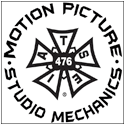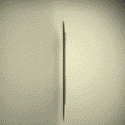
Legendary filmmaker John Hughes, who singlehandedly created and sustained Chicago’s film industry in the 1980s and 1990s, died of a heart attack Aug. 6, while in Manhattan, where he’d been visiting family.
He is most closely associated with generation-defining, class conscious coming-of-age movies that championed the young and put-upon, and for finding and introducing young actors, who became known as the “Brat Pack.”
One of his actors, Bill Paxton (Weird Science, 1985), called him “a boy wonder, like Orson Wells, a director’s director, a writer’s writer, a filmmaker’s filmmaker. He was one of the giants.”
Former Chicagoan Barbara Roche, whose company cast thousands of extras for 9 of Hughes 13 Chicago films over a jam-packed decade, tells the legend of how Hughes’ illustrious career got started.
A copywriter at Leo Burnett at the time, John Hughes walked into the Illinois Film Office one day in the late 70s and asked location scout Ron Ver Kuilen’s advice on how to sell his screenplays to Hollywood.
Ver Kuilen told the young man to bring in some of his work and the next day Hughes returned with a box filled with comedy scripts, “one better than the other,” Ver Kuilen said, and he introduced him to Hollywood producers.
The first of the only eight films he directed was Sixteen Candles. It was set in Highland Park, one of the several North Shore suburbs he liked for locations, and grossed over $38 million.
Thereafter, he produced Chicago films non-stop: The Breakfast Club, 1985; Weird Science, 1985; Ferris Bueller’s Day Off, 1986; Planes, Trains and Automobiles, 1987; She’s Having a Baby, 1988, Uncle Buck, 1989; Home Alone, 1990; Only the Lonely, 1991; Dutch, 1991; Curly Sue, 1991; Dennis the Menace, 1993 and Baby’s Day Out, 1994.
Hughes’ greatest box office success was his $15 million-budgeted Home Alone, shot in Winnetka, which he wrote and produced but did not direct. It grossed $534 million worldwide and spawned a Home Alone franchise of four successors.
Recently, CFO director Rich Moskal, who worked in the IFO when John Hughes came in with his box of scripts, told the Tribune that he “toyed with the idea of making a film for the 2016 Olympic bid. He loved Chicago and wanted to promote that to the woirld community. But like many of John’s recent projects, it stayed in his head and never took hold.”
“Chicago owes John Hughes big time for creating and producing major studio movies, all made in Chicago, when he could just as easily have shot them in Hollywood or other locations,” says Roche, whose casting company first worked with Hughes on She’s Having a Baby in 1988.
“We were told that John never used the same casting company twice, so we were surprised and thrilled when we were called back after She’s Having a Baby,” she recalls. “He was difficult but brilliant, and to keep up with him, you had to get in his head.”
A native of Lansing, Michigan, Hughes grew up in Glenview. He attended Glenbrook North high school in Northbrook, where he was the odd kid out among the rich students, and graduated in 1968. The school was later the frequent locale for his teen angst comedies.
Throughout his career, Hughes remained in the Chicago area. “His reason for working and living on the North Shore was that he didn’t enjoy the trappings of Hollywood.”
His current residence was Williams Bay, Wisconsin. Although his movies made billions, he chose to live on the North Shore. The closest he came to a Beverly Hills lifestyle was a Lake Forest mansion on the lake, where he lived reclusively for 25 years.
He is survived by his wife of 30 years, Nancy Hughes, and two sons, James and John.














